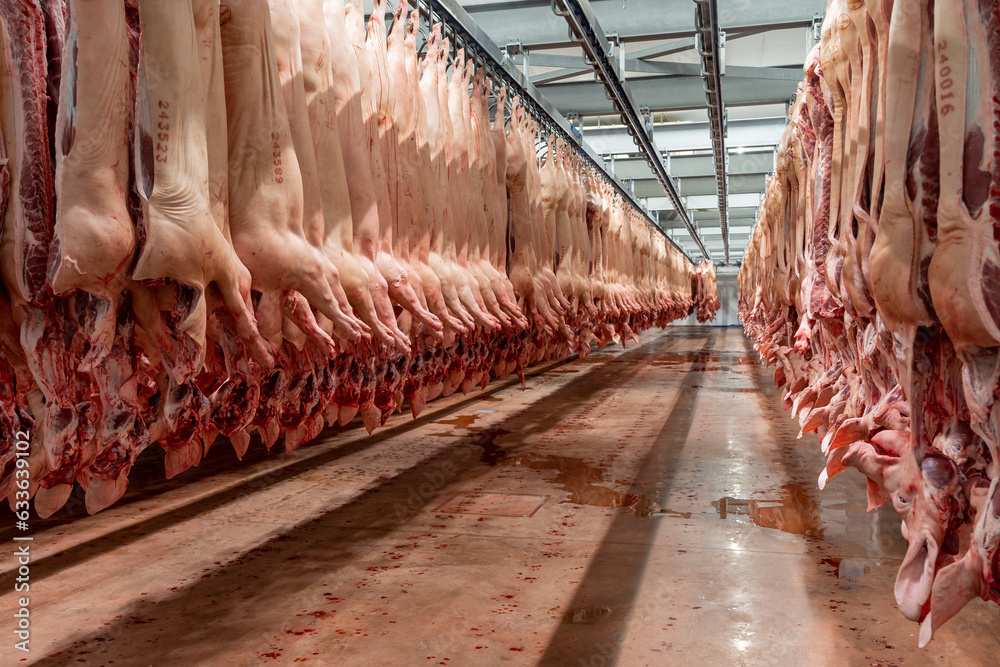EU pigmeat production is forecast to be broadly stable in 2025, following two years of growth.
Following a 2% increase in EU pigmeat production in 2023, last year saw a 2.3% increase, driven largely by Spain (+6%), Germany (+4%), Denmark (+4%) and Poland (+3%). The increase was a result of both higher slaughter pig numbers and a 1.8% increase in carcase weight.
The first quarter of this year saw higher pigmeat production on the back of more pigs coming forward and higher carcase weights.
However, according to the European Commission’s short-term outlook for EU agricultural markets in 2025, given the 3% decline in breeding sows recorded in the December 2024 livestock survey, it is forecasting that EU pigmeat production could see a decline in the second half of 2025. This is predicted to lead to a relatively small 0.4% overall decline in production during the year.
The document stresses, however, that African Swine Fever (ASF) outbreaks remain a risk for production.
Pig price
The EU weighted average pigmeat price has started to increase again from February this year. However, it is still slightly below last year’s level, but above the 5-year average, although with slightly lower feed prices, margins remain positive.
“The climbing prices could signal that the EU pigmeat demand is strong, especially because pigmeat is currently the cheapest meat,” the outlook document states.
Following an uplift in pigmeat consumption last year (+2.4%), the consumption is forecast to remain stable in 2025 at 31.7kg/capita.
EU pigmeat prices currently remain substantially higher compared to key competitors, such as Brazil, the US and Canada, limiting export opportunities.
EU exports
After four years of decline, EU exports were relatively stable over the first four months of the year, although shipments to the UK declined by 6%, alongside a 19% decline to Japan and a 9.5% drop to the US.
However, pork exports doubled to Vietnam, as it struggles with ASF, due mainly to a significant increase in pork lard, with shipments to China up +3.8%.
However, with increasing production forecasts in China and the UK for 2025, EU exports are estimated to decline by 3% in 2025, if the price gap between EU and international competitors remains stable.
The documents notes that action resulting from China’s ongoing anti-dumping investigation into EU pigmeat, now extended until December 2025, could further hit exports, while possible US tariffs could ‘create both opportunities and risks for EU exports’.
EU imports declined by almost 8% over the first three months of the year, mainly because of declining exports from Chile and Switzerland to the EU.
But UK pigmeat exports to the EU, which account for about 70% of total EU pigmeat imports, have increased so far this year, leading to a marginal 1% increase in the EU imports forecast for 2025.
However, EU imports are forecast to decline again in 2026.
Beef market
The beef market, including hig prices in the UK and EU, continues to be a major factor in the relatively healthy state of the UK pig market.
The commission document states that elevated cattle prices have encouraged EU beef carcase weights up in Q1 2025, leading to a 2% annual increase in carcase weight for this period.
However, early year production declines in major beef producing states, France, Spain and Germany, have offset slight increases in Ireland, Italy and Poland.
Total 2025 EU net beef production (from total cattle slaughter in the EU excluding the balance of trade) is forecast to be 1.3% lower than 2024 levels at 6.73 million tonnes, driven primarily by the shrinking breeding herd, AHDB’s report on the document notes.
Beef consumption in Europe is expected to remain steady despite higher prices with per capita consumption estimated at 9.9kg, 0.9% down year-on-year.




